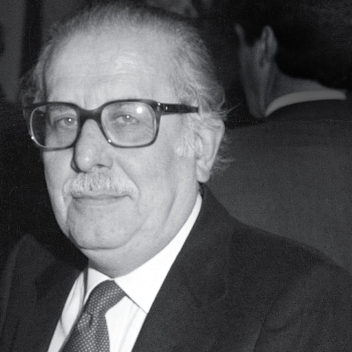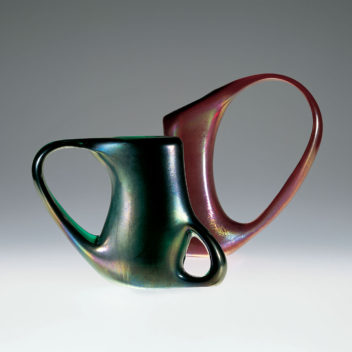
Giorgio Ferro 1931–
Born in Murano and the son of the glassmaker Galliano Ferro, Giorgio Ferro attended the Istituto d’Arte di Venezia, dedicating himself initially to painting. He soon went to work as a designer at the Vetreria A.VE.M. where his father had become a partner after the death of its artistic director Giulio Radi (1952). His most significant work of the period is a piece called Anse Volanti, dark colored vessels with iridescent surfaces and ample handles obtained hot directly from the body, which produces a remarkable sculptural effect. When his father, Galliano, left A.VE.M. in 1955 to found his own company, he followed him to become the artistic director of the new furnace, and designed thin blown pieces as well as essentially shaped encased glass pieces. He has been owner of Galliano Ferro since 1972.


